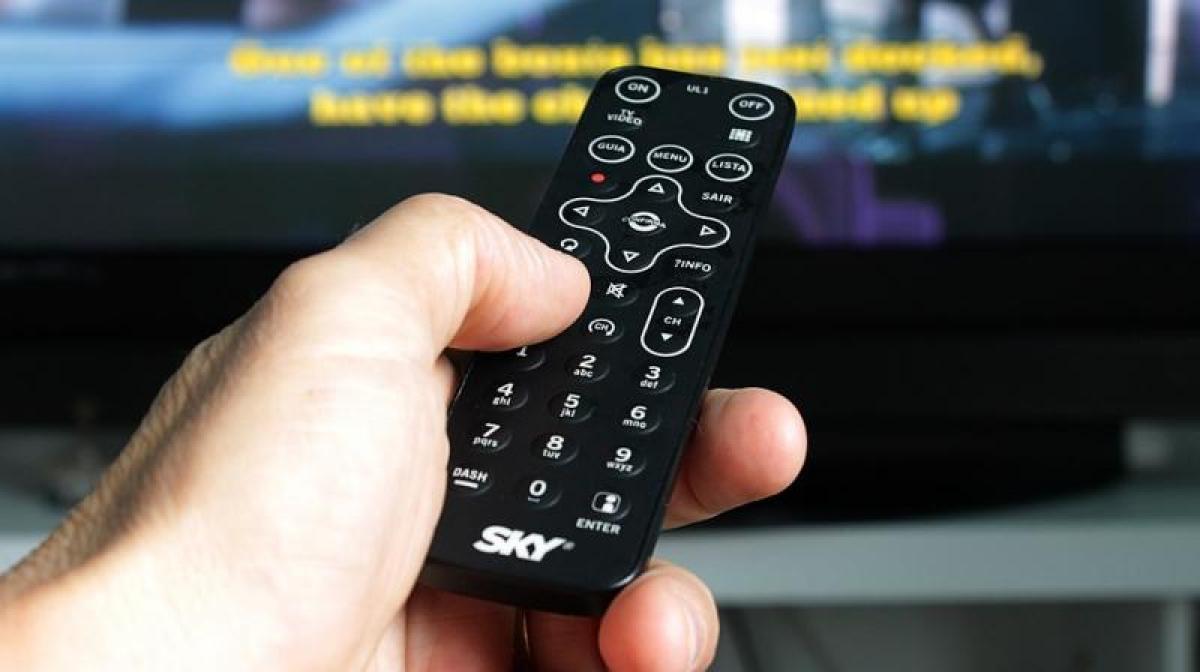Live
- All you need to know about PAN 2.0
- Akasa Air redefines travel experience with industry-first offerings
- MP: Residents stage protests against liquor shop in Indore
- Telugu Actor Shri Tej Booked for Alleged Cheating and False Promise of Marriage in Live-in Relationship
- Toyota Kirloskar Motor Celebrates 1 Lakh Urban Cruiser Hyryder on Indian Road
- MLS: New York City FC part ways with head coach Nick Cushing
- Delhi CM says Centre cutting AAP voters’ names from rolls, BJP hits back
- Hyderabad Metro Rail Phase-II Works to Begin in Old City in January 2025
- Odisha: 668 persons killed in human-elephant conflicts in last three years
- DEFENDER JOURNEYS: TO EMBARK ON ITS THIRD EDITION FROM NOVEMBER 2024
Just In

Researchers believe Matchpoint is also suitable to be used as an accessibility tool for people who are unable to use traditional pointers, such as remote controls and a mouse and keyboard.
Can't find your TV remote again? Scientists have developed a technology that can turn everyday objects - such as teacups or toy cars - into remote controls for televisions.
Researchers from Lancaster University in the UK show a novel technique that allows body movement, or movement of objects, to be used to interact with screens.
The 'Matchpoint' technology, which only requires a simple webcam, works by displaying moving targets that orbit a small circular widget in the corner of the screen. These targets correspond to different functions - such as volume, changing channel or viewing a menu. The user synchronises the direction of movement of the target, with their hand, head or an object, to achieve what researchers call 'spontaneous spatial coupling', which activates the desired function.
Unlike existing gesture control technology, the software does not look for a specific body part it has been trained to identify - such as a hand. The technology looks for rotating movement so it does not require calibration, or the software to have prior knowledge of objects.
This provides much more flexibility and ease for the user as it works even while hands are full, and while stood or slouching on the sofa. Users also do not need to learn specific commands to activate different functions, as is the case with some gesture controlled televisions on the market, and the user is able to decouple at will.
When selecting volume adjustment or channel selection, sliders appear. The user moves their hand, head, or object, in the required direction indicated by the slider to change the volume or to find the desired channel.
As well as televisions, the technology can also be used with other screens. For example, YouTube tutorials, such as mending bikes or baking cakes, could be easily paused and rewound on tablet computers without users having to put down tools or mixing bowls.
Multiple pointers can be created to allow more than one user to point at drawings or pictures on interactive whiteboards simultaneously.
Matchpoint also allows users to manipulate images on whiteboards by using two hands to zoom in and out, and rotate images.
In addition to short-term couplings, users can also link stationary objects to controls, which even when left for prolonged periods will retain their control function.
For example, a mug sat on a table could change a track on a music player when moved left or right, and a rolling toy car could be used to adjust volume.
Objects can lose their coupling with controls simply by removing them from the camera's field of view.
"Spontaneous spatial coupling is a new approach to gesture control that works by matching movement instead of asking the computer to recognise a specific object," said Christopher Clarke, PhD student at Lancaster University.
"Everyday objects in the house can now easily become remote controls so there are no more frantic searches for remote controls when your favourite programme is about to start on another channel, and now everyone in the room has the 'remote'," Clarke said.
Researchers believe Matchpoint is also suitable to be used as an accessibility tool for people who are unable to use traditional pointers, such as remote controls and a mouse and keyboard.

© 2024 Hyderabad Media House Limited/The Hans India. All rights reserved. Powered by hocalwire.com







